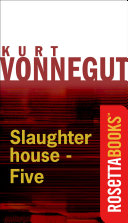Adapted for a magnificent George Roy Hill film three years later (perhaps the only film adaptation of a masterpiece which exceeds its source), Slaughterhouse-Five (1969) is the now famous parable of Billy Pilgrim, a World War II veteran and POW, who has in the later stage of his life become “unstuck in time” and who experiences at will (or unwillingly) all known events of his chronology out of order and sometimes simultaneously. Traumatized by the bombing of Dresden at the time he had been imprisoned, Pilgrim drifts through all events and history, sometimes deeply implicated, sometimes a witness. He is surrounded by Vonnegut’s usual large cast of continuing characters (notably here the hack science fiction writer Kilgore Trout and the alien Tralmafadorians who oversee his life and remind him constantly that there is no causation, no order, no motive to existence). The “unstuck” nature of Pilgrim’s experience may constitute an early novelistic use of what we now call Post Traumatic Stress Disorder; then again, Pilgrim’s aliens may be as “real” as Dresden is real to him. Struggling to find some purpose, order or meaning to his existence and humanity’s, Pilgrim meets the beauteous and mysterious Montana Wildhack (certainly the author’s best character name), has a child with her and drifts on some supernal plane, finally, in which Kilgore Trout, the Tralmafadorians, Montana Wildhack and the ruins of Dresden do not merge but rather disperse through all planes of existence. Slaughterhouse-Fivewas hugely successful, brought Vonnegut an enormous audience, was a finalist for the National Book Award and a bestseller and remains four decades later as timeless and shattering a war fiction as Catch-22, with which it stands as the two signal novels of their riotous and furious decade.
Read more1 save
0 reviews
0 stacks
